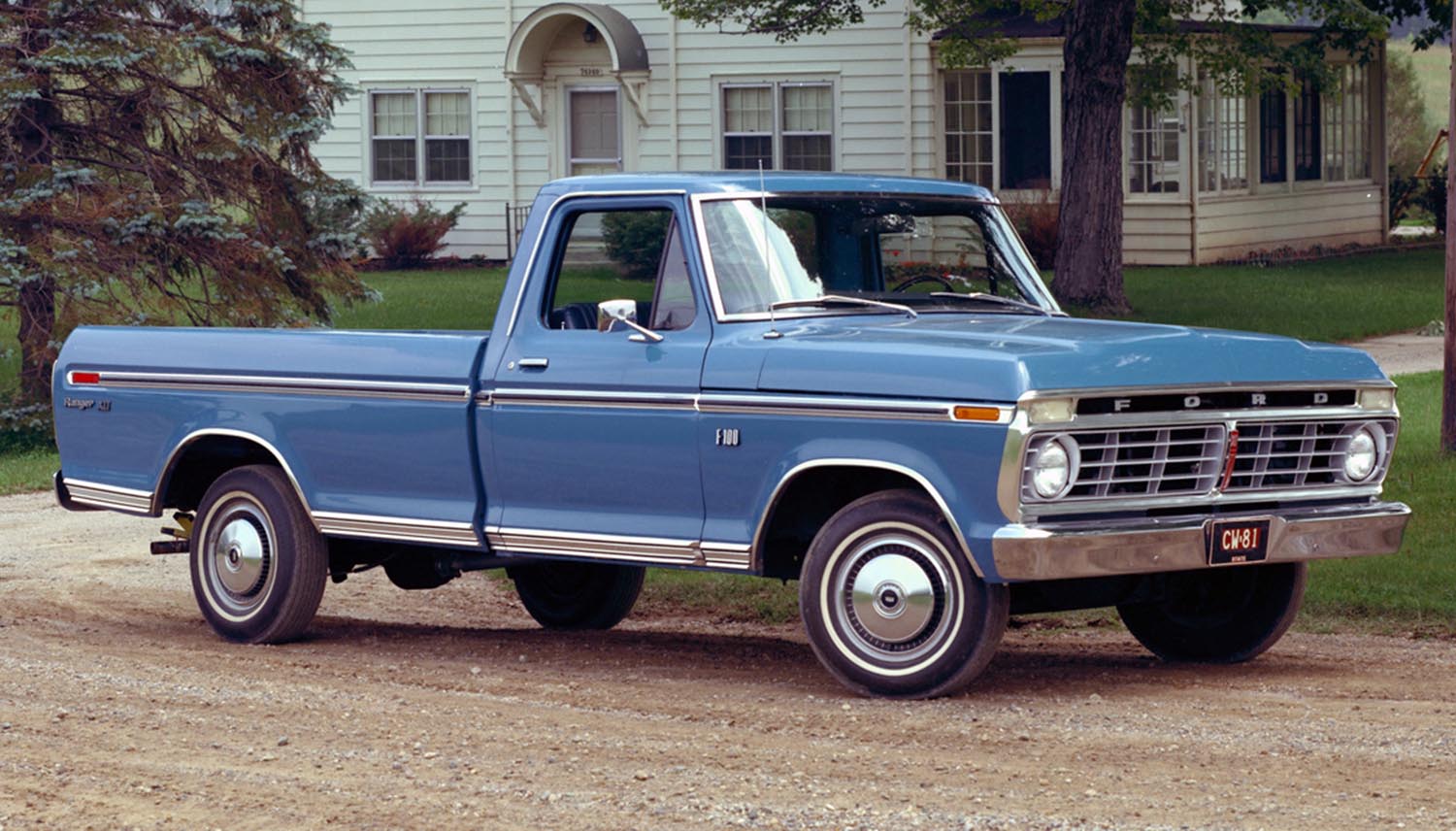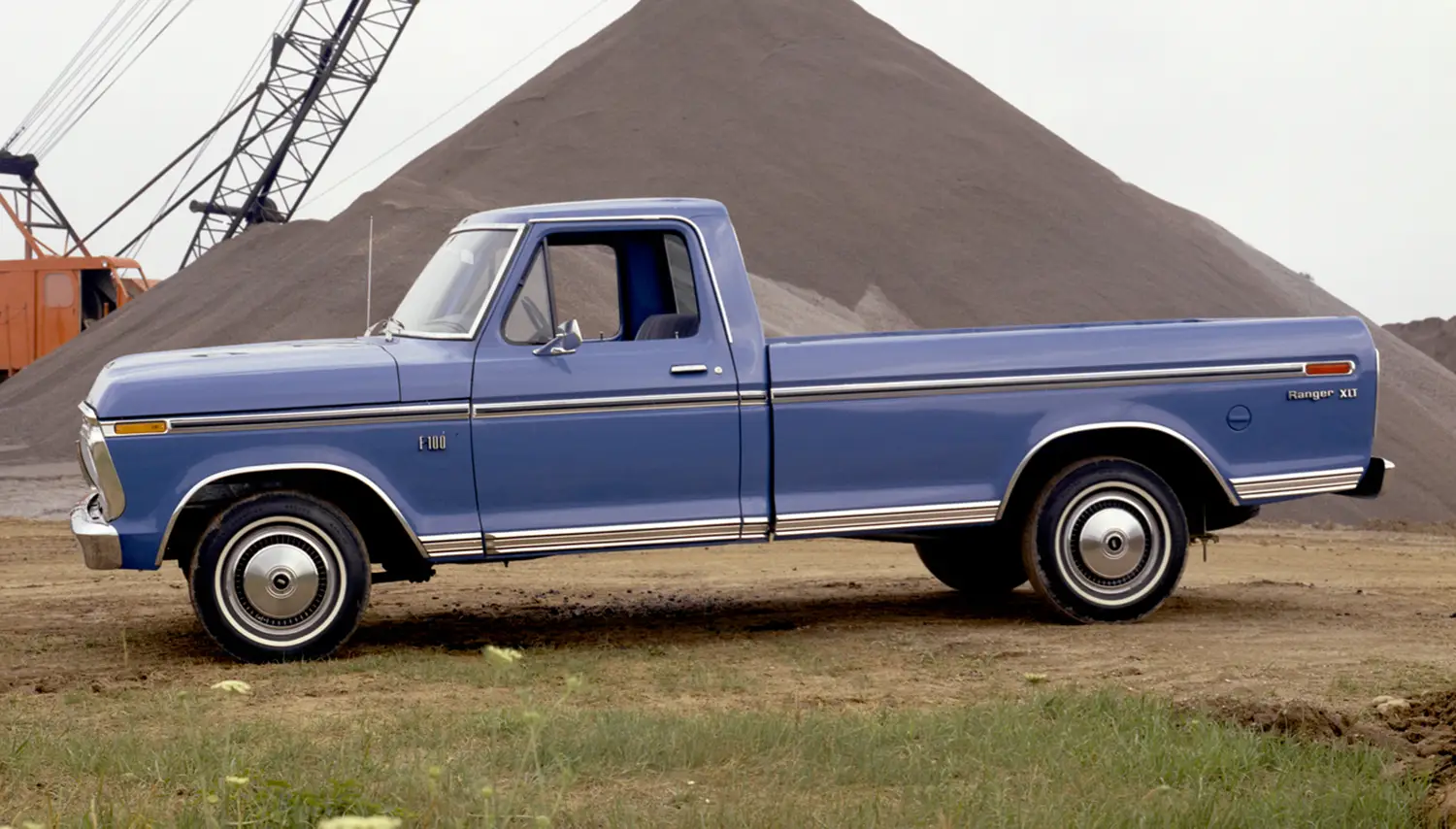
The year 1973 represents a fundamental turning point for American trucks. Specifically, Ford launched the sixth generation of its legendary F-Series line. The 1973 Ford F-100 pickup did not simply evolve; it signaled a strategic shift, combining rugged utility with previously unseen levels of comfort and refinement. This move helped cement the F-Series’ trajectory toward becoming a dominant force in the entire American automotive landscape. Therefore, this particular model is celebrated by enthusiasts as the inaugural “Dentside” truck, a nod to its unique body styling.
A Cab Built for Comfort and Space
The core of the new F-Series revolution was its substantially redesigned cab. Ford recognized that pickup trucks were increasingly used as daily drivers and personal transportation. Consequently, the new cab was the roomiest Ford had ever installed on a conventional pickup. It boasted wider hip room and shoulder room, truly accommodating three adults with ease. Furthermore, the interior styling included color-coordinated fabrics and handsome new trim lines.
Enhanced Safety and Interior Design
A critical safety innovation arrived with the 1973 model year. Ford relocated the fuel tank from its traditional spot behind the driver’s seat. The tank was successfully moved to a protected position between the frame rails below the bed. This change not only improved safety but created valuable storage space behind the seat back. This new area was wide and deep, perfectly suited for toolboxes or luggage. The new dashboard was redesigned for better ergonomics and featured a modern, blend-air heating system.
The Iconic “Dentside” Styling
The nickname “Dentside” refers to the distinctive body line running along the side of the truck. This subtle indentation stretched the length of the body, giving the 1973 Ford F-100 pickup a unique visual profile. The front end featured a taller, more pronounced grille and a clamshell hood design. This clamshell structure had reinforced internal bracing to minimize hood shake, enhancing the truck’s overall sense of solidity. These styling cues were a blend of modern simplicity and rugged purpose.
Mechanical Upgrades for a Smoother Ride
Ford’s engineering team focused intensely on ride quality to attract non-commercial buyers. The renowned Twin I-Beam independent front suspension, exclusive to Ford, was retained. Importantly, it was complemented by new, longer rear leaf springs on the F-100 model. These progressive springs were engineered to provide a smooth ride even when the truck was empty. Simultaneously, the 4×2 models gained standard front disc brakes, offering superior stopping power and better heat dissipation than the old drums. This blend of features truly delivered on the “rides-like-a-car” promise.
Power, Engine Specs, and Performance
The 1973 Ford F-100 pickup offered a dependable array of powertrain options. The standard engine was the 240 cubic inch inline-six, which produced a net 101 horsepower and 185 lb-ft of torque. Buyers seeking more power could select from several V8s. The 302 cubic inch V8 delivered approximately 140 horsepower, while the larger 360 cubic inch V8 was rated at around 143 horsepower. For maximum pulling ability, the 390 cubic inch V8 was the most powerful option, offering up to 168 horsepower and a healthy 314 lb-ft of torque (estimated net figures vary slightly by configuration). Transmission choices included three-speed manual, four-speed manual, or the popular Cruise-O-Matic automatic. These rugged engines and sturdy frames provided excellent utility, delivering an authentic and powerful driving experience.
The Truck That Defined a Decade
The launch of the sixth generation with the 1973 Ford F-100 pickup proved masterful. By integrating car-like comfort, crucial safety features, and mechanical advancements, Ford successfully broadened the appeal of its light-duty truck. This formula was immediately successful and helped the F-Series eventually become America’s best-selling vehicle line. This robust, reliable, and more comfortable F-100 became the bedrock for future generations, truly marking it as an icon of American automotive engineering.
Disclaimer: Content on this site is for informational purposes only. Vehicle specs, pricing, and availability may change. Always verify details with official sources before making decisions. Opinions are those of the authors.
Source: Ford Heritage Vault
